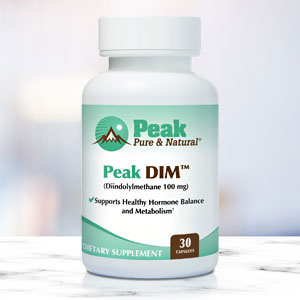Get Easy Health Digest™ in your inbox and don’t miss a thing when you subscribe today. Plus, get the free bonus report, Mother Nature’s Tips, Tricks and Remedies for Cholesterol, Blood Pressure & Blood Sugar as my way of saying welcome to the community!
18 ways to protect declining sperm and T-levels

A recent meta-analysis from the Hebrew University of Jerusalem notes that sperm counts, or the concentration of sperm in ejaculate, among men have declined by a little more than 52 percent over the last four decades.
The study’s authors were careful to look only at research that did not involve men known to have infertility problems and that used the same sperm counting method. They also waffled on the reasons why the decline is happening. More on that later…
Altogether, the meta-analysis looked at 185 studies that involved nearly 43,000 men from western countries (including Australia, Europe, North America, and New Zealand) or from elsewhere. The authors reported the following findings:
- Sperm concentrations have fallen from 99 million per milliliter in 1973 to 47.1 million per milliliter in 2011
- Among the same men, total sperm count (the number of sperm in a sample of semen) declined by nearly 60 percent
- The authors also noted a less dramatic drop in sperm concentration among western men who had conceived with a partner
According to Richard Sharpe, professor at the University of Edinburgh and an expert in male reproductive health, researchers are still not certain what the reason is for the decline in sperm. Allan Pacey, professor of andrology at the University of Sheffield, said “We have got very little epidemiological evidence to say what might be causing it [the decline in sperm concentration], so we are still scratching our heads a little bit in my view.”
However, the reviewers also stated the following:
While the current study is not designed to provide direct information on the causes of the observed declines, sperm count has been plausibly associated with multiple environmental and lifestyle influences, both prenatally and in adult life. In particular, endocrine disruption from chemical exposures or maternal smoking during critical windows of male reproductive development may play a role in prenatal life, while lifestyle changes and exposure to pesticides may play a role in adult life. Thus, a decline in sperm count might be considered as a ‘canary in the coal mine’ for male health across the lifespan. Our report of a continuing and robust decline should, therefore, trigger research into its causes, aiming for prevention.
Why sperm counts are declining
The reviewers did point out that endocrine disruptors and pesticide exposure “may play a role” in sperm count declines. Although they did not enthusiastically point the finger in that direction, it is a positive nod. After all, there are numerous studies that have provided significant proof that environmental toxins, including pesticides used on food crops, are having a significant impact on sperm health as well as testosterone levels and sexual problems in men.
For example, a 2014 article in Frontiers in Public Health pointed out that the banned substance polychlorinated biphenyls (PBCs) can interfere with the production and development of sperm. Another study found that BPA (bisphenol A), a substance found in many plastics, can cause sperm DNA damage. Various studies have identified phthalates (another common plastic component) and their metabolites as disrupting sperm production, quality, concentration, and motility.
Other damage to males from environmental pollutants
In a report from the Endocrine Society, experts warned that exposure to high levels of phthalates, which are found in personal care products and plastics, can reduce testosterone levels. In particular, the authors noted that reduced T levels were associated with increased exposure to phthalates in several populations, including boys, ages 6 to 12, and men, ages 40 to 60. Disrupted testosterone in young males can have a negative impact on their reproductive development, while low T in later years can affect libido, energy, cognitive function, sexual performance, and bone health and contribute to the formation of man boobs.
Environmental toxins also appear to have an impact on prostate cancer. In a 2017 study from Spain, researchers noted that endocrine disruptors “exert their effect at very low doses and act insidiously over the years,” and that “an inadequate diet and contact with certain toxic agents predisposes to the disease.” A Belgian study appearing in the Journal of Environmental and Public Health pointed out that the incidence and prevalence of diseases associated with exposure to endocrine-disrupting substances, including prostate cancer, have increased over the last 50 years.
How to avoid BPA and other endocrine disruptors
To help maintain sperm health as well as testosterone levels, avoid endocrine disruptors whenever possible.
- Check labels on personal care products for the presence of chemicals such as phthalates, parabens, and others. In fact, it is best to stick to all-natural shampoos, lotions, after shave, soaps, and similar products.
- Select products without fragrance, as phthalates are typically found in fragrances.
- Choose organic produce, grains, low-fat dairy, meats, and beverages whenever possible to avoid exposure to pesticides.
- Buy fresh or frozen fruits and vegetables, not canned.
- Steer clear of BPA by not using plastic food containers or water bottles. Always avoid plastics with the numbers 3, 6, or 7; safer numbers are 1, 2, and 4.
- Avoid foods and beverages in cans, as BPA can leach into the contents. Choose glass containers or frozen foods instead.
- Say no to cash register receipts, as many are tainted with BPA.
- Use all-natural cleaning products
- Choose all-natural insect and weed control for your lawn and garden
- Avoid dry cleaning your clothes.
- Say no to sexual lubricants, which can disrupt hormones. Try coconut oil instead
- Filter your water to help reduce phthalate content.
- Heat and store food in stainless steel, ceramic, and/or glass–no plastic!
- Steer clear of plastic toys for infants and children and sex toys for adults.
- If you don’t know whether a product is BPA or phthalate free, contact the manufacturer and ask.
- Choose safer options than plastic wrap, such as parchment paper, glass jars, or ceramic containers.
- Always bring your own coffee or other hot beverage mug, as disposable paper cups are typically lined with plastic.
- Ask your dentist whether she or he uses BPA-free sealants or composites.
Sources:
- De Coster S, van Larebeke N. Endocrine-disrupting chemicals: associated disorders and mechanisms of action. Journal of Environmental and Public Health 2012; art. ID 713696
- Jeng HA. Exposure to endocrine disrupting chemicals and male reproductive health. Frontiers in Public Health 2014 Apr 6; 2:55
- Levine H et al. Temporal trends in sperm count: a systematic review and meta-regression analysis. Human Reproduction Update 2017 Jul 25; 1-14
- Meeker JD, Ferguson KK. Urinary phthalate metabolites are associated with decreased serum testosterone in men, women, and children from NHANES 2011-2012. The Journal of Clinical Endocrinology & Metabolism 2014; jc.2014-2555
- Sanchez de Babajoz E et al. Endocrine disruptors and prostate cancer. Arch Esp Urol 2017 Apr; 70(3): 331-35













